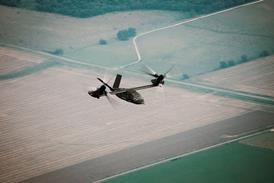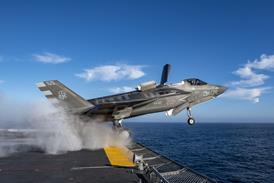PAUL LEWIS / WASHINGTON
US defence expenditure is set to receive a major increase both in near-term supplemental and long-term budget spending offering a much needed financial lifeline to once endangered equipment programmes in the wake of the recent terrorist attacks.
The US Congress has approved a $40 billion supplemental increase in defence, $10 billion of which President Bush has been given carte blanche to spend. Defence analysts are expecting further injections of cash as US forces mobilise and deploy for a retaliatory military campaign. This is over and above the $329 billion defence budget requested for fiscal year 2002.

"Defence spending has reached the bottom and it will now go up substantially over a period of years. I would expect the FY2003 budget will exceed $400 billion, a third higher than in 2001. A large part will go to covering unanticipated contingency operations, the call-up of reserves, domestic and overseas deployments and a significant increase in procurement spending," says Loren Thompson, the Lexington Institute's chief executive.
Immediate spending will be used to sustain an expected military campaign against terrorist targets in Afghanistan. The Department of Defense is looking to rapidly increase the production of precision guided munitions, such as the Boeing GBU-31 Joint Direct Attack Munition, stocks of which were severely depleted by the 1999 Kosovo campaign.
Extra spending longer-term is expected to result in accelerated development of a number of programmes previously threatened by funding shortages. This is likely to include a start to full scale development of the Joint Strike Fighter, the Northrop Grumman RQ-4 Global Hawk and the cruise missile-armed DD-21 land attack warship. The anticipated emphasis on shipboard and long-range strikes in the coming conflict will shore up support for the new CVX aircraft carrier and again lead to calls to restart Northrop Grumman B-2 bomber production.
It will give a much needed boost for the troubled Bell Boeing V-22 tiltrotor programme. "This scenario is almost tailor made for the V-22 in terms of ground force insertion and extraction, particularly over the ranges we're talking about," says Thompson. The politically more contentious ground-based missile defence programme is also coming in for extra scrutiny with the increased attention to US "homeland defence", though its effectiveness is still a matter for debate. "It's completely irrelevant butresonates well with politicians and has emotional appeal," suggests Teal Group analyst Richard Aboulafia.
Source: Flight International























